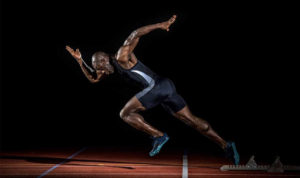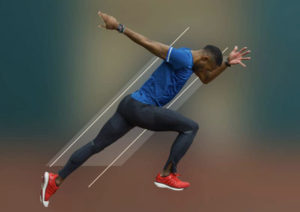. 2007 May;21(2):543-9.
doi: 10.1519/R-19535.1.
Effects of sprint and plyometric training on muscle function and athletic performance
- PMID: 17530960
- DOI: 10.1519/R-19535.1
Abstract
The purpose of this study was to evaluate the effects of sprint training on muscle function and dynamic athletic performance and to compare them with the training effects induced by standard plyometric training. Male physical education students were assigned randomly to 1 of 3 groups: sprint group (SG; n = 30), plyometric group (PG; n = 30), or control group (CG; n = 33). Maximal isometric squat strength, squat- and countermovement jump (SJ and CMJ) height and power, drop jump performance from 30-cm height, and 3 athletic performance tests (standing long jump, 20-m sprint, and 20-yard shuttle run) were measured prior to and after 10 weeks of training. Both experimental groups trained 3 days a week; SG performed maximal sprints over distances of 10-50 m, whereas PG performed bounce-type hurdle jumps and drop jumps. Participants in the CG group maintained their daily physical activities for the duration of the study. Both SG and PG significantly improved drop jump performance (15.6 and 14.2%), SJ and CMJ height ( approximately 10 and 6%), and standing long jump distance (3.2 and 2.8%), whereas the respective effect sizes (ES) were moderate to high and ranged between 0.4 and 1.1. In addition, SG also improved isometric squat strength (10%; ES = 0.4) and SJ and CMJ power (4%; ES = 0.4, and 7%; ES = 0.4), as well as sprint (3.1%; ES = 0.9) and agility (4.3%; ES = 1.1) performance. We conclude that short-term sprint training produces similar or even greater training effects in muscle function and athletic performance than does conventional plyometric training. This study provides support for the use of sprint training as an applicable training method of improving explosive performance of athletes in general.
Similar articles
-
Effects of in-season short-term plyometric training program on leg power, jump- and sprint performance of soccer players.J Strength Cond Res. 2010 Oct;24(10):2670-6. doi: 10.1519/JSC.0b013e3181e2728f.PMID: 20844458
-
Electromyostimulation and plyometric training effects on jumping and sprint time.Int J Sports Med. 2006 Jul;27(7):533-9. doi: 10.1055/s-2005-865845.PMID: 16802248 Clinical Trial.
-
The effects of ten weeks of resistance and combined plyometric/sprint training with the Meridian Elyte athletic shoe on muscular performance in women.J Strength Cond Res. 2007 Aug;21(3):882-7. doi: 10.1519/R-50512.1.PMID: 17685727 Clinical Trial.
-
Effect of Plyometric Training on Vertical Jump Performance in Female Athletes: A Systematic Review and Meta-Analysis.Sports Med. 2017 May;47(5):975-986. doi: 10.1007/s40279-016-0634-6.PMID: 27704484 Review.
-
Factors Modulating Post-Activation Potentiation of Jump, Sprint, Throw, and Upper-Body Ballistic Performances: A Systematic Review with Meta-Analysis.Sports Med. 2016 Feb;46(2):231-40. doi: 10.1007/s40279-015-0415-7.PMID: 26508319 Review.



